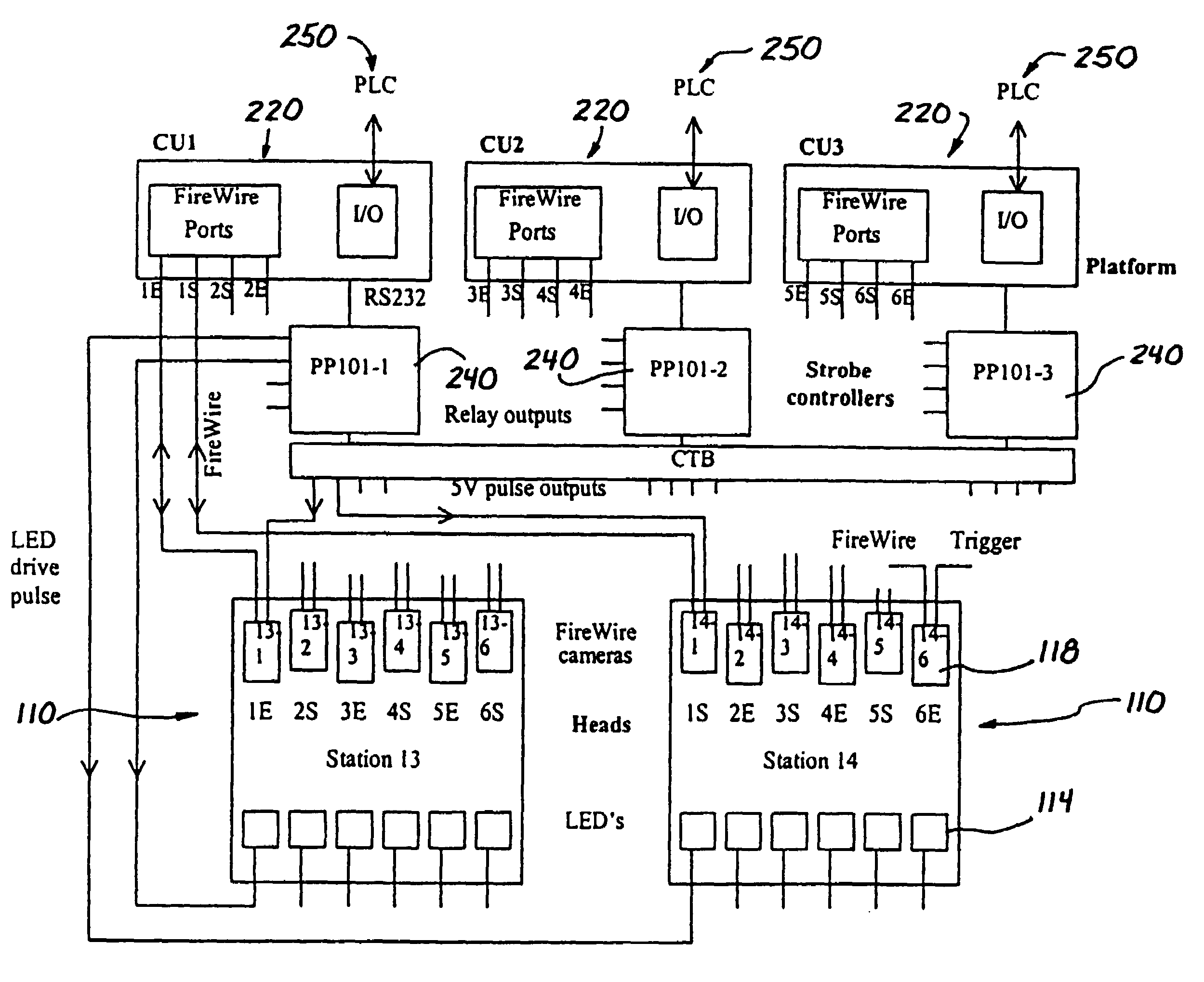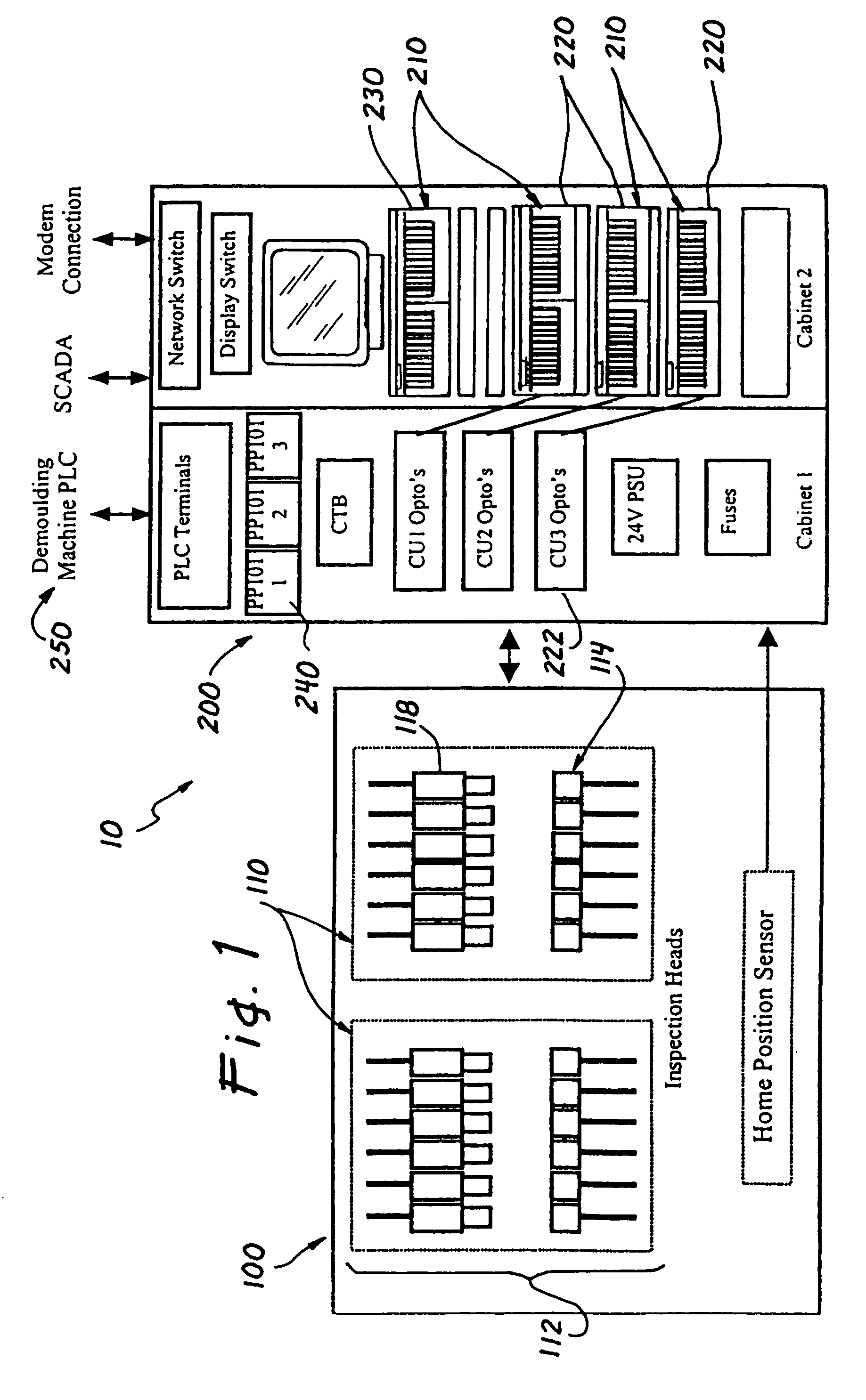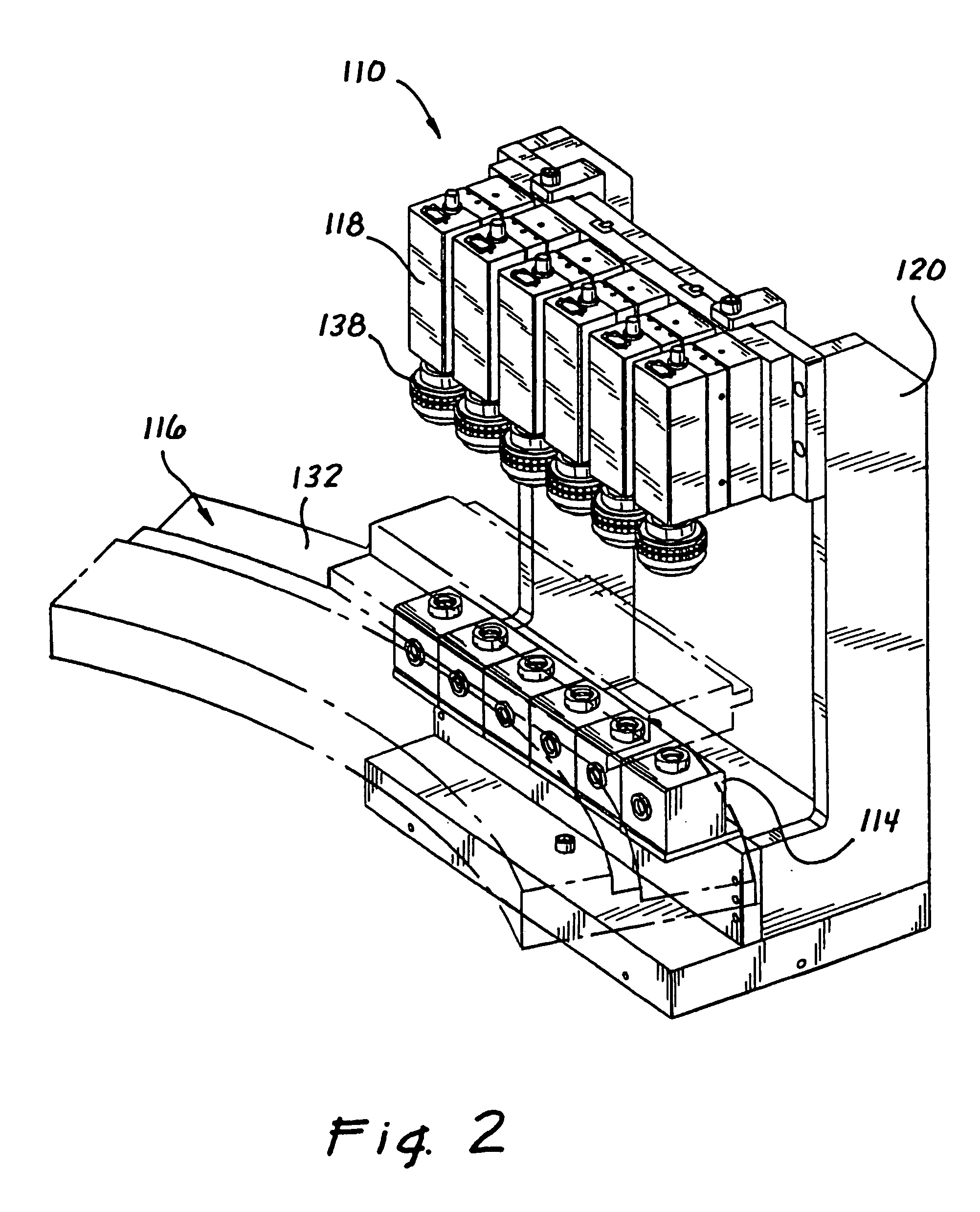Systems and methods for inspection of ophthalmic lenses
a technology for ophthalmic lenses and inspection systems, applied in the field of lens inspection systems, can solve the problems of contamination on the inspection window, fine defects in the lens, and the detection of fine defects, so as to reduce false rejection of inspected lenses, and improve the accuracy of lens inspection. the effect of detection accuracy
- Summary
- Abstract
- Description
- Claims
- Application Information
AI Technical Summary
Benefits of technology
Problems solved by technology
Method used
Image
Examples
Embodiment Construction
[0028]FIG. 1 illustrates a lens inspection system 10, which is used to automatically inspect lenses, such as contact lenses, or other ophthalmic lenses. Lens inspection system 10 is structured to inspect lenses in their dry, or non-hydrated, state. In the illustrated embodiment of the invention, lens inspection system 10 inspects each lens after the lens has been removed from a lens mold. The inspection system 10 inspects the lens by imaging the edge of the lens and imaging the surface of the lens, and processing the edge and surface images using one or more computer algorithms to detect lens defects or abnormalities.
[0029]Lens inspection system 10 generally comprises an image acquisition subsystem 100, and an image analysis subsystem 200. In reference to the disclosure herein, the image acquisition subsystem 100 may be an ophthalmic lens demolding machine, and the image analysis subsystem 200 may be referred to as an inspection platform.
[0030]1. Image Acquisition Subsystem 100.
[003...
PUM
 Login to View More
Login to View More Abstract
Description
Claims
Application Information
 Login to View More
Login to View More - R&D
- Intellectual Property
- Life Sciences
- Materials
- Tech Scout
- Unparalleled Data Quality
- Higher Quality Content
- 60% Fewer Hallucinations
Browse by: Latest US Patents, China's latest patents, Technical Efficacy Thesaurus, Application Domain, Technology Topic, Popular Technical Reports.
© 2025 PatSnap. All rights reserved.Legal|Privacy policy|Modern Slavery Act Transparency Statement|Sitemap|About US| Contact US: help@patsnap.com



